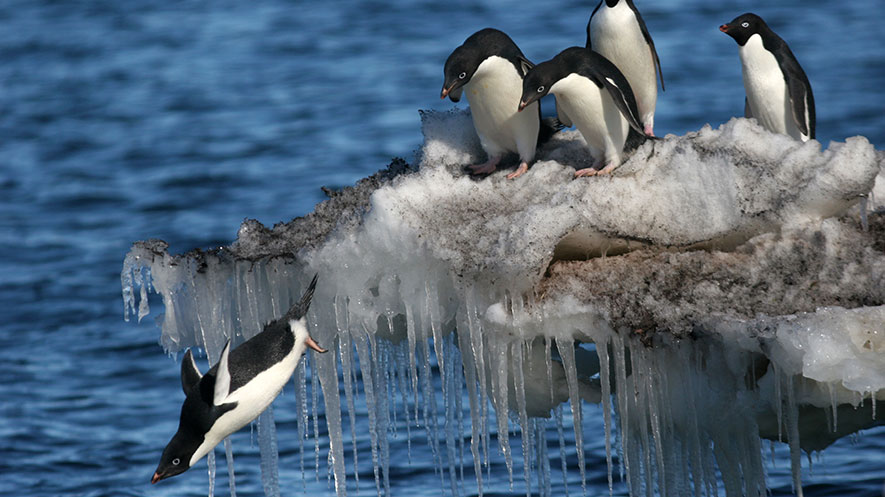The world's experts on Antarctic marine conservation have agreed to establish a marine protected area (MPA) in Antarctica's Ross Sea.
This new MPA, to come into force in December 2017, will limit, or entirely prohibit, certain activities in order to meet specific conservation, habitat protection, ecosystem monitoring and fisheries management objectives. Seventy-two percent of the MPA will be a 'no-take' zone, which forbids all fishing, while other sections will permit some harvesting of fish and krill for scientific research.
The Commission for the Conservation of Antarctic Marine Living Resources (CCAMLR) announced the MPA on 28 October 2016, after meeting in Hobart, Australia. All CCAMLR member countries agreed to a joint USA/New Zealand proposal to establish a 1.55 million km2 area of the Ross Sea with special protection from human activities.
CCAMLR Executive Secretary, Andrew Wright, is excited by this achievement and acknowledges that the decision has been several years in the making. He said, “This has been an incredibly complex negotiation which has required a number of Member countries bringing their hopes and concerns to the table at six annual CCAMLR meetings as well as at intersessional workshops.
"A number of details regarding the MPA are yet to be finalized but the establishment of the protected zone is in no doubt and we are incredibly proud to have reached this point," said Mr Wright.
CCAMLR's Scientific Committee first endorsed the scientific basis for proposals for the Ross Sea region put forward by the USA and New Zealand in 2011. It invited the Commission to consider the proposals and provide guidance on how they could be progressed. Each year from 2012 to 2015 the proposal was refined in terms of the scientific data to support the proposal as well as the specific details such as exact location of the boundaries of the MPA. Details of implementation of the MPA will be negotiated through the development of a specific monitoring and assessment plan. The delegations of New Zealand and the USA will facilitate this process.
This year's decision to establish a Ross Sea MPA follows CCAMLR's establishment, in 2009, of the world’s first high-seas MPA, the South Orkney Islands southern shelf MPA, a region covering 94 000 km2 in the south Atlantic.
"This decision represents an almost unprecedented level of international cooperation regarding a large marine ecosystem comprising important benthic and pelagic habitats," said Mr Wright.
"It has been well worth the wait because there is now agreement among all Members that this is the right thing to do and they will all work towards the MPA's successful implementation," he said.
MPAs aim to provide protection to marine species, biodiversity, habitat, foraging and nursery areas, as well as to preserve historical and cultural sites. MPAs can assist in rebuilding fish stocks, supporting ecosystem processes, monitoring ecosystem change and sustaining biological diversity.
Areas closed to fishing, or in which fishing activities are restricted, can be used by scientists to compare with areas that are open to fishing. This enables scientists to research the relative impacts of fishing and other changes, such as those arising from climate change. This can help our understanding of the range of variables affecting the overall status and health of marine ecosystems.





